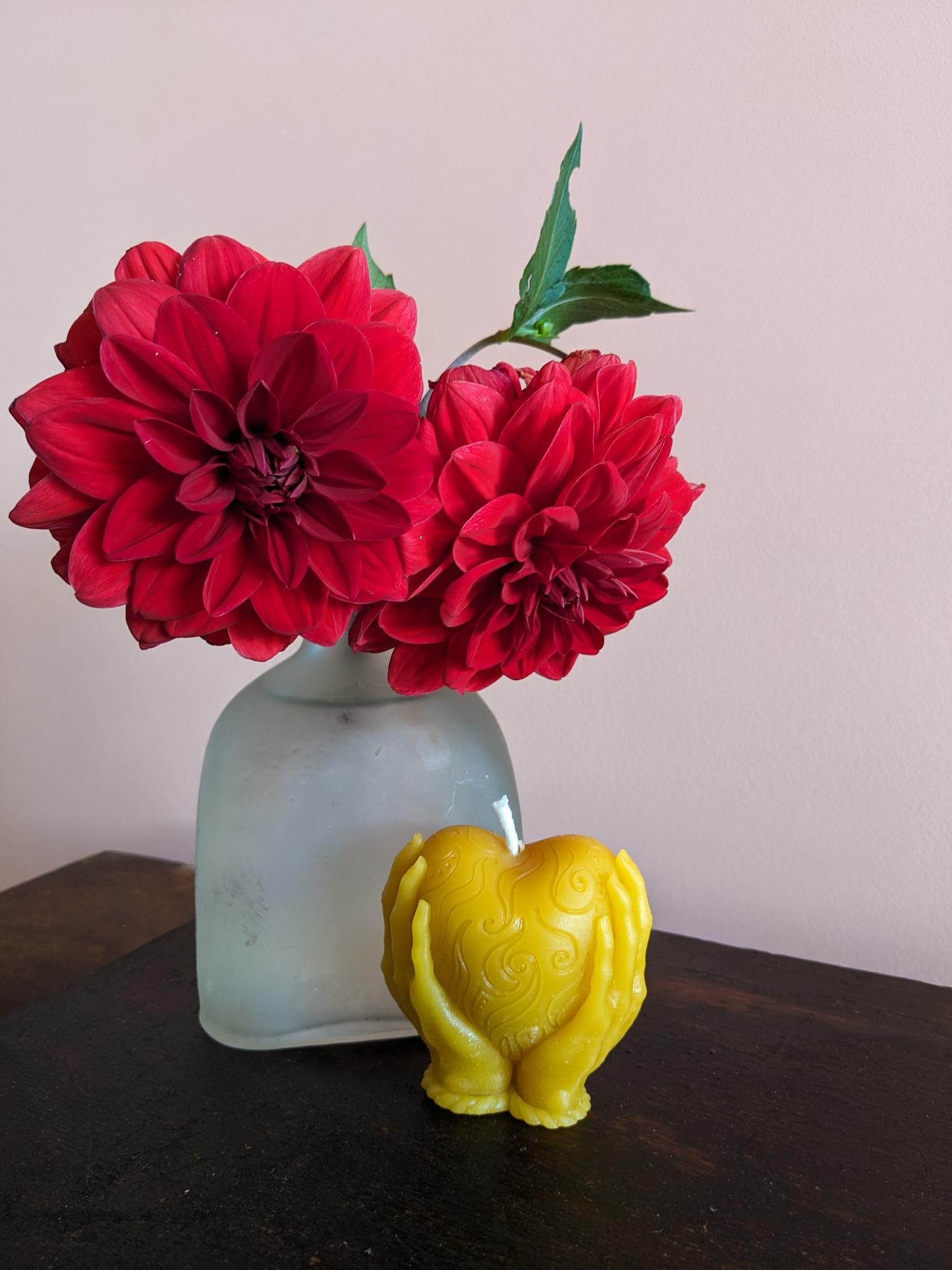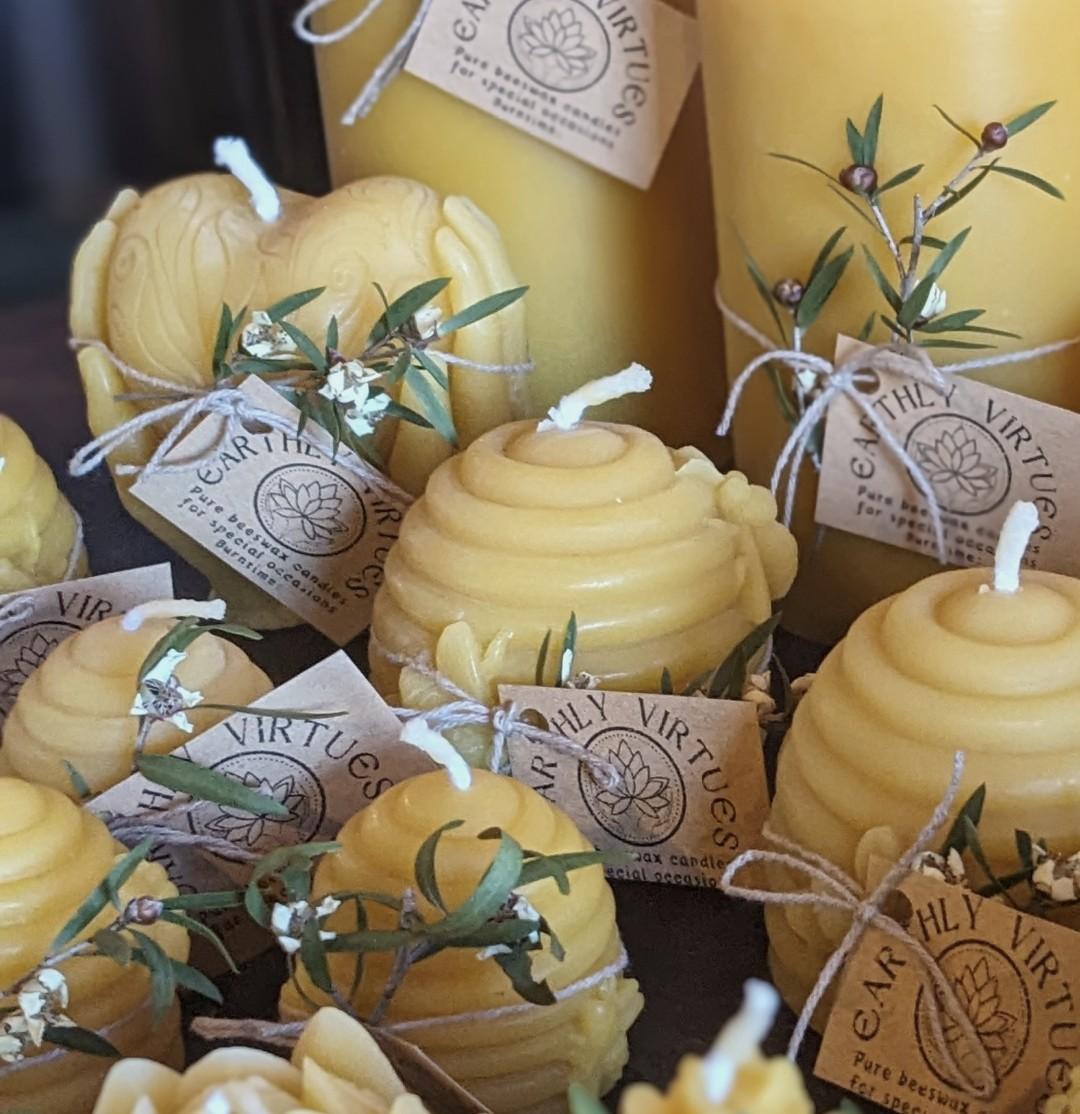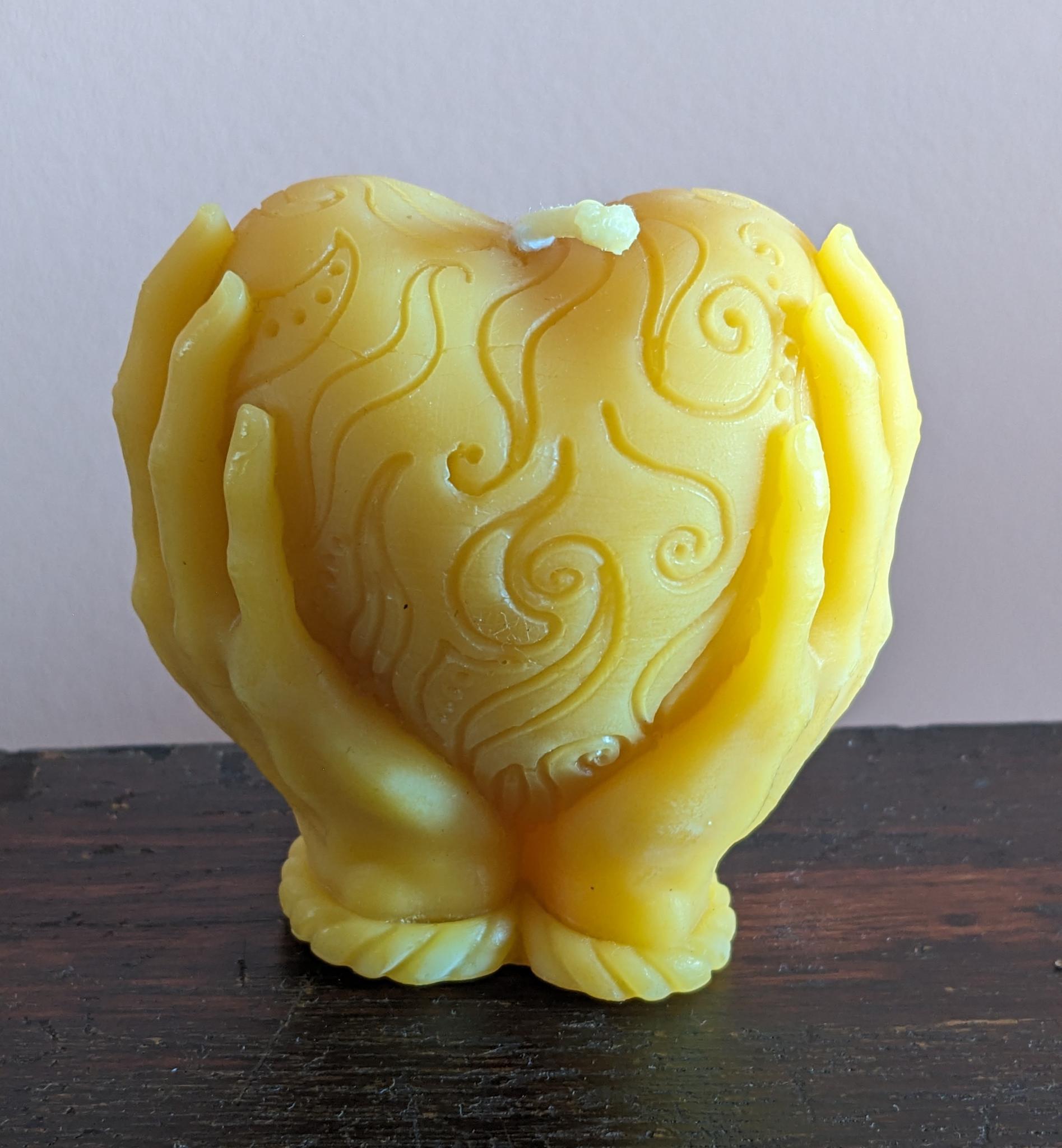Heart and Hands Beeswax Candle
Burntime 15.5 hours
Pure Beeswax Candle made from beeswax collected and minimally processed by us from our bees, containing a pure cotton wick.
Features:
- 100% Pure beeswax collected and minimally processed by us from our bees. This retains as much of the hive medicines as possible.
- Pure cotton wicks selected for bright light and durable burn
- Hand poured into silicone mold - Heart and Hands Beeswax Candle
- Each one is handmade and uniquely different and make great gifts!
Why choose Beeswax Candles?
- Beeswax candles are a natural source of light
- Beeswax candles are a cleaner choice of candle as they don't emit chemicals like paraffin and synthetic fragrances.
- Super cosy bright light, with a yummy natural scent, they also emit negative ions, purifying the air. Each one is handmade and uniquely different.
- Traditionally used in spiritual practices, ceremonies & altars, they are excellent for creating a sacred space.
May you use your special occasion candle to bring a touch of meaning and magic to your day, be it in celebration of yourself or to connect in with another.
Caring for your Pure Beeswax Candle
Here are some key tips for beeswax candle care and maintenance:
Trimming the Wick
Before lighting your beeswax candle, trim the wick to about ¼ inch (6 mm) in length. Trimming the wick helps prevent excessive smoking and ensures a clean, even burn. Long wicks can cause the candle flame to flicker or produce soot, so regular trimming is essential.
Secure candle
Secure candle to suitable holder and burn candle in a draft free area away from curtains
Candle Placement
Place your beeswax candles away from drafts or air currents. Drafts can cause the flame to flicker and burn unevenly, leading to dripping or tunnelling. Optimal placement will help ensure a steady, even burn and prolong the life of your candle. Be aware of nearby curtains.
Burning Time
When burning beeswax candles for the first time, allow the wax to melt evenly across the entire surface. This helps prevent tunnelling, where the wax burns down the center, leaving unused wax along the sides. For subsequent burns, try to allow the candle to burn for at least one hour per inch of diameter to ensure an even melt pool.
Extinguishing Properly
When extinguishing your beeswax candle, use a snuffer or gently blow out the flame. Avoid blowing on the flame directly, as this can cause hot wax to splatter. Extinguishing the flame properly helps prevent smoking and ensures the wick remains centered and ready for the next use.
Storage
Store your beeswax candles in a cool, dry place away from direct sunlight. Excessive heat can cause the wax to soften or melt, while sunlight can fade the colour and natural fragrance of the candles over time. Proper storage will help maintain the quality and appearance of your candles.
Cleaning
If your beeswax candles develop dust or dirt on the surface, gently wipe them with a soft, dry cloth. Avoid using water or harsh cleaning agents, as these can damage the wax. Regular cleaning will help keep your candles looking beautiful and enhance their performance.
Over time
Your candle may develop a whitish coating over time- it’s called a beeswax “bloom”, and can be reversed by gently heating with a hairdryer. It is a normal and harmless substance that comes from the wax itself, a natural occurrence that occurs with pure beeswax products.
By following these simple maintenance tips, you can ensure that your beeswax candles burn cleanly, evenly, and safely, providing hours of enjoyment and ambience in your home.
The origins of beeswax candles
The origins of beeswax candles trace back thousands of years to ancient civilisations where they were among the earliest forms of artificial light. The ancient Egyptians are believed to have been the first to discover the utility of beeswax for candle making around 3000 BCE. They would dip papyrus reeds into melted beeswax to create rudimentary candles.
With the advent of industrialisation in the 19th century, the popularity of beeswax candles declined as cheaper alternatives such as stearin and paraffin became more widely available. These synthetic alternatives were easier and cheaper to produce, leading to a shift away from beeswax candles for everyday use.
However, in recent decades, there has been a resurgence of interest in beeswax candles due to growing concerns about environmental sustainability and health. Modern consumers appreciate the natural, renewable, and non-toxic qualities of beeswax, leading to a renewed appreciation for this ancient form of illumination.
Made with love by Aspen. Thank you for your purchase! By doing so, you are supporting small business development and natural home industries.




Reviews